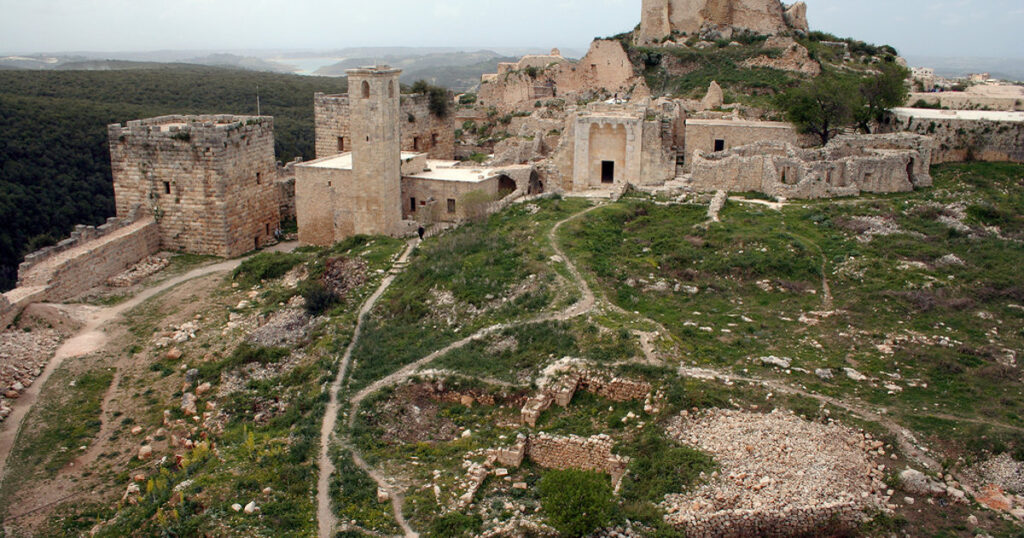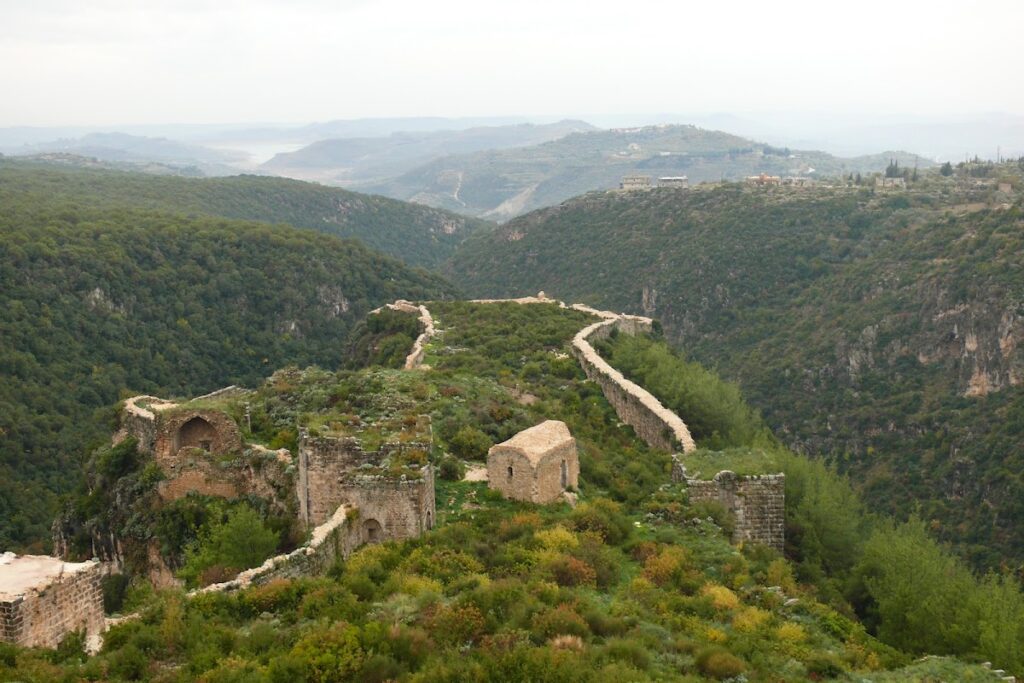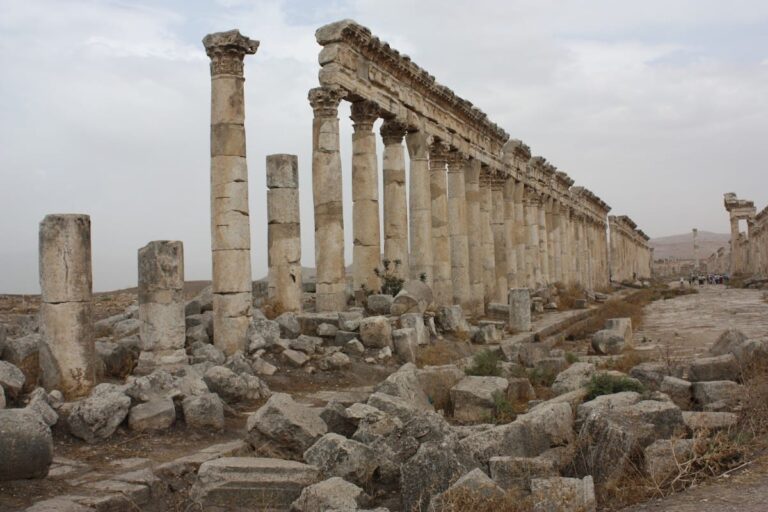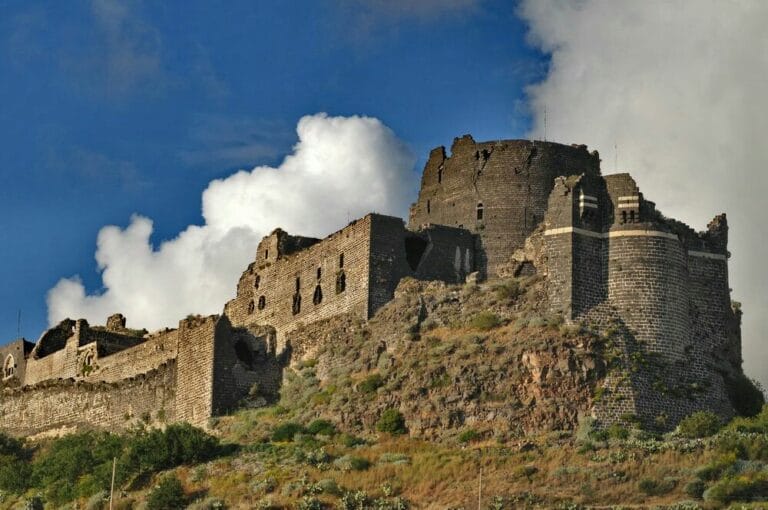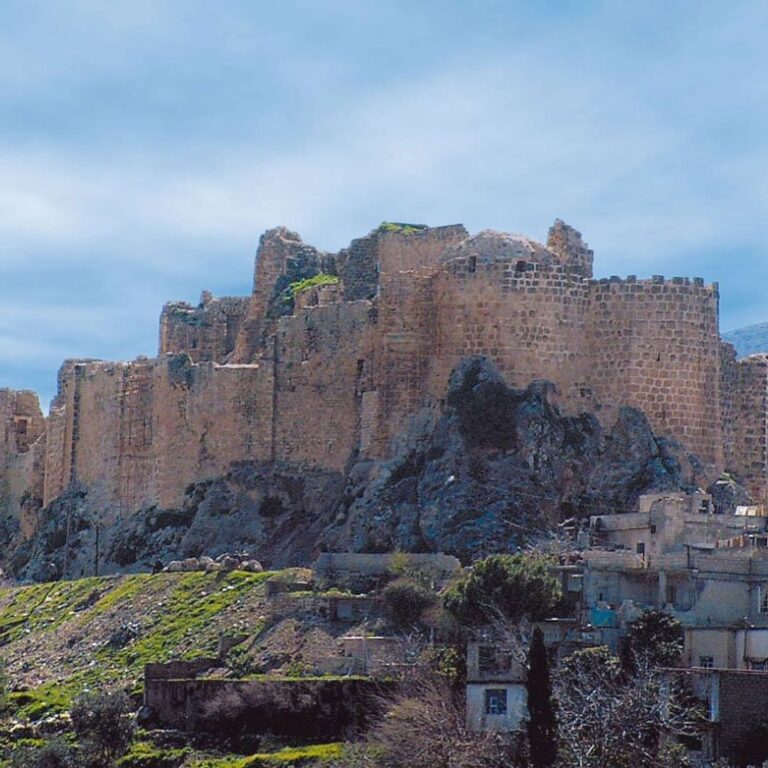Citadel of Salah Ed-Din: A Medieval Fortress in Syria
Visitor Information
Google Rating: 4.7
Popularity: Low
Google Maps: View on Google Maps
Country: Syria
Civilization: Unclassified
Remains: Military
History
The Citadel of Salah Ed-Din is a medieval fortress situated near the town of Al-Haffah in modern Syria. It was originally established by the Hamdanid dynasty during the mid-10th century and occupies a commanding position on a mountainous ridge.
In its early history, the citadel was under the control of Sayf al-Dawla, a prominent Muslim ruler of the Hamdanid dynasty. In 975 AD, Byzantine Emperor John I Tzimiskes captured the fortress, bringing it under Byzantine rule. The citadel remained in Byzantine hands for over a century, until the early 12th century.
Around 1108 AD, Crusader forces seized the nearby port city of Latakia and likely took control of the citadel as well. It then became part of the Crusader Principality of Antioch. By 1119, Robert the Leper is recorded as the lord of the fortress. During this period, the Crusaders undertook substantial reconstruction and enhancement of the castle, shaping much of its present-day architecture. Unlike many Crusader fortresses, it was not managed by major military orders such as the Knights Hospitaller or the Templars.
In July 1188, the citadel faced a significant military challenge when the Muslim leader Saladin and his son Az-Zahir Ghazi laid siege to it. Using siege engines capable of throwing massive stones weighing from 50 to 300 kilograms, they inflicted serious damage on the walls. After three days, the Crusader garrison agreed to surrender under negotiated conditions. Saladin then entrusted the fortress to his general Mankawar, whose family maintained control until 1272.
In the 1280s, the citadel became a bastion for the Mamluk emir Sunqur al-Ashqar, who used it as a semi-independent stronghold during his conflicts with Sultan Qalawun. Following a siege in 1286–1287 led by Qalawun’s forces, Sunqur relinquished the fortress. Subsequently, the citadel was incorporated into the Mamluk administrative region of Tripoli and retained its strategic role through the late 14th century.
After the Ottoman Empire conquered Syria in 1516, the fortress was abandoned and left to fall into ruin. It remained neglected for several centuries, until restoration efforts began in the 20th century. In 2006, the site, together with Krak des Chevaliers, was recognized as a UNESCO World Heritage Site.
Remains
The Citadel of Salah Ed-Din occupies a rocky ridge about 700 to 740 meters in length and covers roughly five hectares. Its location—approximately 410 meters above sea level—between two deep valleys carved by streams provides natural defense. Its roughly triangular shape has a broad eastern base and is divided into two principal sections: a higher eastern plateau that holds the main fortifications, and a lower western area that historically served as a residential quarter. These two parts are connected by a moat carved directly into the bedrock.
One of the most striking features is a deep water-filled moat along the eastern side, measuring about 28 meters in depth and 156 meters in length, with a width between 14 and 20 meters. This moat likely dates back to the Byzantine period but was completed during the Crusader era. A single massive rock pillar standing 28 meters high supports a drawbridge that once spanned this defensive barrier, emphasizing the fortress’s strategic ingenuity.
The fortress’s main gate is located on the southern side, where Crusader-era bastions and defensive towers stand guard. Among these structures is a large watchtower, notable for its thick walls measuring around 5 meters and occupying an area of about 24 square meters. Close to the entrance are stables and a water reservoir positioned near a spacious vaulted chamber with views over the moat, indicating the practical needs of the castle’s garrison.
Within the citadel’s core, remnants of Byzantine fortifications coexist with Crusader additions. A substantial cistern from the Byzantine period provided water storage, while Crusader pavilions and a church built beside one of two older Byzantine chapels attest to continuous religious and military use. The defensive walls, dating mainly to the Crusader period, feature up to five concentric layers designed to repel attacks effectively.
Later architectural contributions from the Arab period include a mosque constructed during Sultan Qalawun’s reign and a palace complex. This complex contains baths with courtyard spaces and iwans—vaulted halls open on one side—which have undergone some restoration work. These additions highlight the fortress’s evolving function beyond purely military purposes.
The walls and towers showcase high-quality masonry crafted from locally sourced stone. The builders employed construction techniques typical of the 12th-century Crusader style, recognized for their durability and skillful workmanship. Overall, the fortress remains well preserved, benefiting from continuous restoration and maintenance by Syrian authorities since the early 20th century, with notable work carried out on the gate and other parts of the structure beginning in the 1930s and intensifying after 1966.

